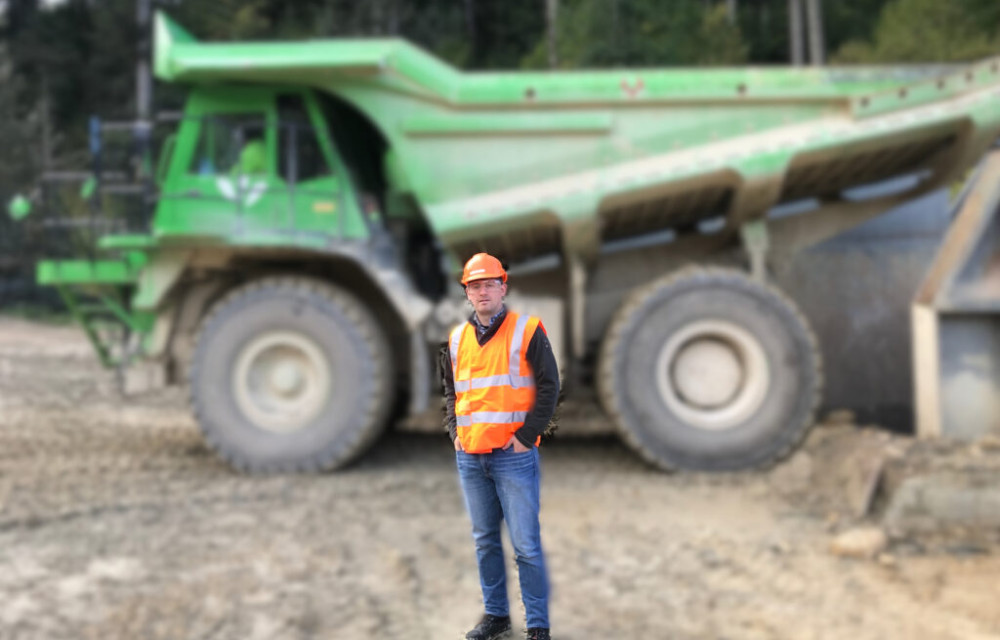Mining powers up for a battery-fuelled future as experts say success now depends on smart data, skilled people and the courage to rethink operations


, , , , , , , , , , , , , , , , ,
, , ,
, , , , , ,
There’s a moment in every technological revolution when optimism meets reality - when the glossy promise of transformation hits the grit of practical deployment. Mining electrification, it turns out, has arrived squarely at that moment.
At a recent AusIMM webinar titled Mine Electrification Landscape – Benefits and Challenges, David Lyon and Edward Fagan, both facilitators of AusIMM’s new Associate Certificate in Mine Electrification and leaders at Zero Nexus, offered a candid look at where the sector truly stands. Their message was refreshingly clear: the electric mine of the future won’t be built on hype, but on hard-earned expertise, collaboration, and a willingness to rethink everything from fleet management to workforce culture.
The trough before the climb
David, a seasoned trainer and former service representative with a decade in OEM electrification, likes to think in curves - specifically, the Gartner hype curve, a model that traces the life cycle of innovation from early excitement to disillusionment, and eventually, to practical maturity.
“We’re somewhere at the bottom of that trough,” he said. “Everyone’s done their pilots, everyone’s had their teething pains, and now it’s about scaling. To get there, we need more people who actually understand the technology - not just how to operate it, but how to design, plan, and integrate it.”
That trough, as he describes it, began forming in the wake of early underground electrification success stories such as Canada’s Macassa Mine, where a lack of ventilation capacity in 2011 forced a creative workaround: battery-electric vehicles (BEVs). The results - lower heat, less noise, reduced emissions, and major ventilation savings - were impressive enough to trigger global interest.
By the mid-2010s, the industry’s enthusiasm hit what David calls “peak expectation.” Contractors wanted 40-tonne battery trucks; OEMs scrambled to deliver them. “But 10 years on,” he explained, “many of those mines still don’t have their full fleet. We’ve seen amazing progress, but also supply bottlenecks, uncertain ROI, and some operational frustrations. It’s no longer about proving BEVs work - it’s about making them work at scale.”

Underground optimism, surface struggles
Edward, the academic counterpart to David’s field-driven pragmatism, brings a systems-engineering lens to the conversation. A PhD in renewable energy and experience designing electrification subsystems gives him perspective on both the physics and the business case.
“One of the biggest insights from our research,” he said, “was just how different the underground and surface experiences are.”
Underground operations, he explained, enjoy a double dividend: electrification cuts ventilation requirements while improving air quality and working conditions. “The business case is clear,” he said. “You get lower operational costs and a healthier work environment. That’s why underground adoption has been relatively swift.”
Surface mining, however, is a tougher sell. “We’re talking about massive haul trucks and long duty cycles - situations where today’s batteries are still being tested at pilot scale,” Edward said. “It’s not that the technology doesn’t work - it just hasn’t been proven at full operational scale yet. That’s why surface electrification is the next frontier, but also the most challenging.”

Knowledge, not kit, drives the transition
Both David and Edward agree that the success of electrification will depend less on the technology itself than on how well mining professionals understand and apply it.
“Electrification isn’t a plug-and-play swap for diesel,” David said. “It changes everything - your energy management, your maintenance routines, your safety assessments. Mines that treat BEVs as a one-to-one replacement for diesel are setting themselves up for problems.”
Edward framed it as a knowledge gap: “There’s a lot of information out there, sometimes even too much, and it can feel overwhelming. What’s missing is structured technical understanding - how to look critically at the opportunities and challenges, how to build a business case that actually fits your site, not someone else’s.”
This is exactly what the new AusIMM Associate Certificate in Mine Electrification aims to address. The course, developed with Zero Nexus, blends case studies, hazard assessment exercises, and techno-economic modelling to help participants move from concept to implementation.
“It’s about giving people the tools,” David said. “If you can identify the hazards, build a bow-tie risk model, and map out your total cost of ownership, you’re not just reacting to change - you’re leading it.”
Real-world lessons from early adopters
The facilitators emphasised that learning from real operations is crucial. One of their reference points was New Afton Mine in British Columbia, which has emerged as a model for managing the human side of electrification.
“New Afton approached electrification as both a technical and a cultural project,” Edward explained. “They didn’t just drop in new equipment - they reorganised maintenance teams, trained electricians and mechanics to become dual technicians, and found internal champions who were genuinely excited about the technology. That enthusiasm turned out to be contagious.”
The mine’s success, he noted, lay in preparing people before problems appeared. Operators were trained not only on machine handling but on understanding range limitations and charging logistics. Maintenance crews were upskilled to handle high-voltage systems safely. “It’s not glamorous work,” Edward said, “but it’s exactly what bridges the gap between a pilot program and a productive fleet.”
David added that buy-in from the workforce often comes down to simple human benefits. “When operators realise the machines are cleaner, quieter, and faster - and that they go home without smelling like diesel - they start to take pride in that change. That’s when you know you’ve shifted the culture.”
Range anxiety, degradation, and data
The discussion didn’t shy away from technical realities. Range anxiety - a familiar issue in the passenger EV market - also exists underground.
“If charging strategies aren’t well aligned with mine design, you’ll get downtime and frustration,” Edward warned. “Battery performance degrades with temperature and time, and that has to be planned for. You might start with four or five haul cycles per shift and end up with three after a few years. That changes productivity calculations dramatically.”
This is where data and digital optimisation come into play. BEVs, by nature, generate richer telemetry than diesel fleets - offering a trove of information on energy use, cycle efficiency, and maintenance trends. “The next big shift will be combining electrification with automation and data analytics,” Edward said. “Digital systems can balance power demand, predict maintenance, and even optimise routes for charging opportunities.”
David agreed. “Electric powertrains aren’t new - we’ve had diesel-electric systems for decades. What’s new is how the data integrates with mine planning. We can now use telemetry to make smarter operational decisions in real time. That’s where the efficiency gains will come from.”
Financing and the battery lifecycle
Beyond the workshop floor, there’s a growing conversation about financing models that de-risk battery ownership.
“If you’re worried that your battery will be outdated in three years,” David said, “there are options like battery-as-a-service. You don’t have to own the asset - you can lease it, build it into your financing structure, and let the supplier manage the evolution of technology. That’s how we bridge the fear of obsolescence.”
Edward added that lifecycle management is a sustainability issue as well as a financial one. “Understanding how batteries degrade, how they can be refurbished or repurposed, and what recycling pathways exist - those are the next steps in responsible electrification,” he said. “It’s not just about getting off diesel - it’s about doing it intelligently.”
From pilots to practice: the road ahead
Asked where BEVs will be in five to ten years, both speakers were cautiously optimistic.
“We’ll see a lot more integration,” Edward said. “Electrification will converge with automation, AI, and digital mine optimisation. Those layers will make BEVs more efficient and help overcome current constraints like energy density.”
David sees incremental but steady progress. “The foundation of mining doesn’t change overnight. What’s evolving are the components - the batteries, the charging systems, the analytics. We’re entering a phase of refinement rather than reinvention.”
He pointed to the 2030 decarbonisation commitments made by many mining companies. “That deadline isn’t far away. The ones who start building expertise now - the planners, the engineers, the technicians - they’re the ones who’ll carry the industry through the transition.”
The human battery behind the machines
If the session had a unifying theme, it was that technology alone won’t electrify mining - people will.
“You can buy a fleet of electric loaders tomorrow,” David said, “but unless your workforce knows how to maintain them, charge them, and operate them safely, you’ll just end up with very expensive experiments.”
Edward echoed the sentiment. “Every mine is different. There’s no one-size-fits-all solution. The sites that succeed are the ones that understand their context and invest in their people first.”
Closing the circuit
Mining has always been a business of calculated risk and long-term investment. Electrification adds a new dimension - requiring not just capital, but curiosity, cooperation, and a readiness to learn.
For practitioners, the big takeaway is simple: electrification is no longer a distant ideal; it’s a skills race. Those who build technical depth, embrace data, and foster cultural readiness will define the electric mine of the future.
Or, as David put it with a smile: “We’ve all seen what the pilots can do. Now it’s time to stop trialling and start mining.”
